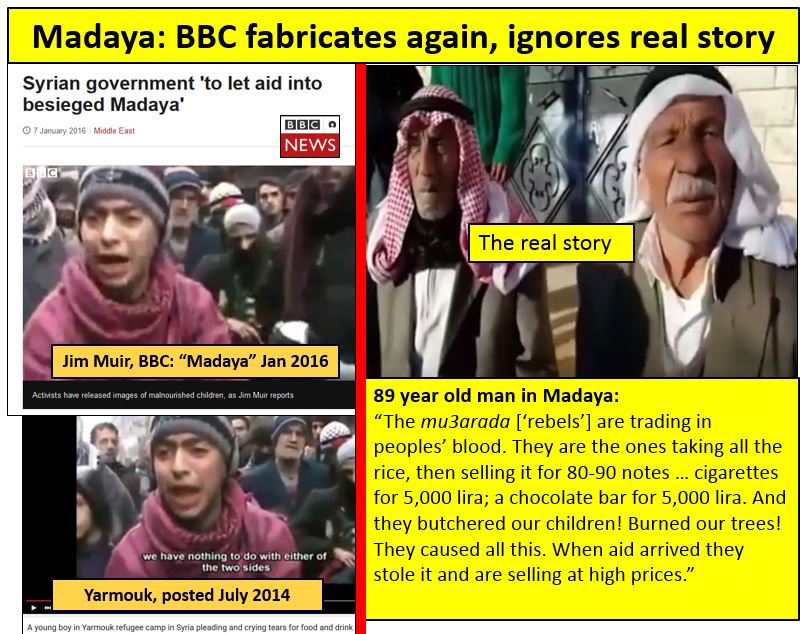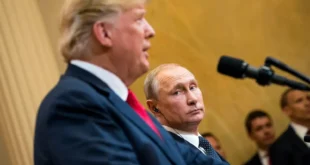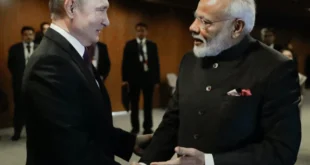By Prof Michel Chossudovsky
Sorry, we made a mistake: The NYT’s retraction was presented as a technical error whereby the wrong pictures were mistakenly selected.
“A packet of American briefing materials that was prepared for the Geneva meeting asserts that the photograph was taken in Russia. The same men are also shown in photographs taken in Ukraine.
“Their appearance in both photographs was presented as evidence of Russian involvement in eastern Ukraine. The packet was later provided by American officials to The New York Times, which included that description of the group photograph in an article and caption that was published on Monday. … The dispute over the group photograph cast a cloud over one particularly vivid and highly publicized piece of evidence.” (NYT, April 22, 2014)
More recently, the BBC has used fake images with a view to accusing the government of Bashar al Assad of deliberately triggering famines by blocking supply routes int Madaya, a city controlled by the rebels close to Damascus.
Below a 2014 image in Yarmouk is used in support of a BBC story pertaining to Madaya in January 2016

Photo montage by Prof Tim Anderson
What should be understood is that the use of fabricated images is a routine procedure of the Western media. Its ultimate intent is to sustain the lie and mislead public opinion.
There are many instances of media manipulation.
The following article first published eight years ago in the wake of the March 2008 Tibet riots shows how CNN used fake videos showing “Chinese cops” involved in the repression of Tibetan activists in Lhasa.
It turns out that the cops are not Chinese but Indian, and the protest movement is not in Lhasa, capital of Tibet but in India.
CNN never retracted its “technical error”. The report –which served to demonize the Chinese authorities– was not the object of controversy as in the case of the NYT’s coverage of the protest movement in Eastern Ukraine or the BBC’s use of fake images in relation to Madaya, Syria.
 Geostrategic Media Political Commentary, Analysis, Security, Defense
Geostrategic Media Political Commentary, Analysis, Security, Defense





